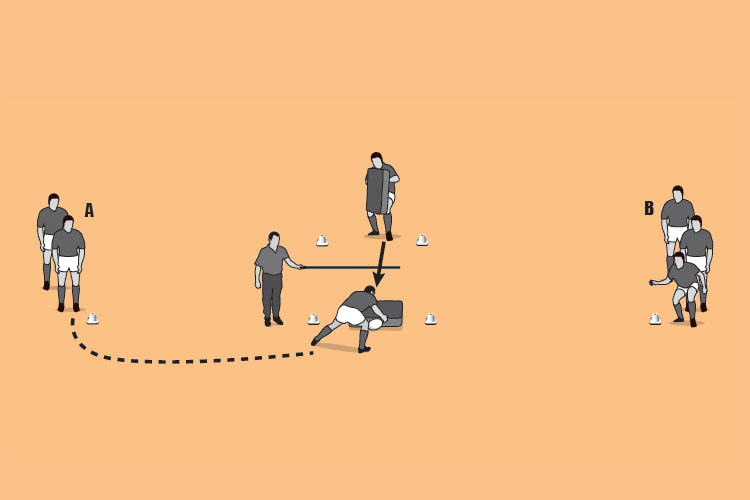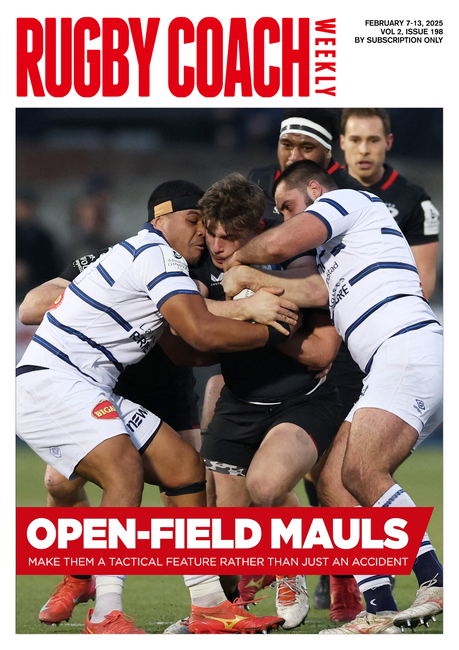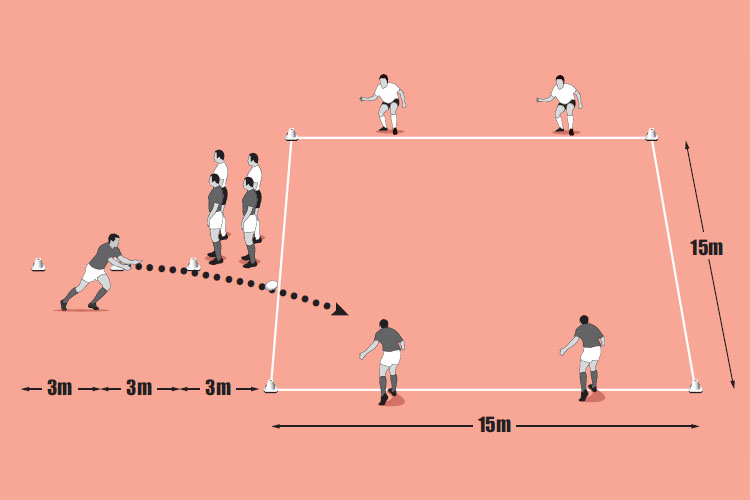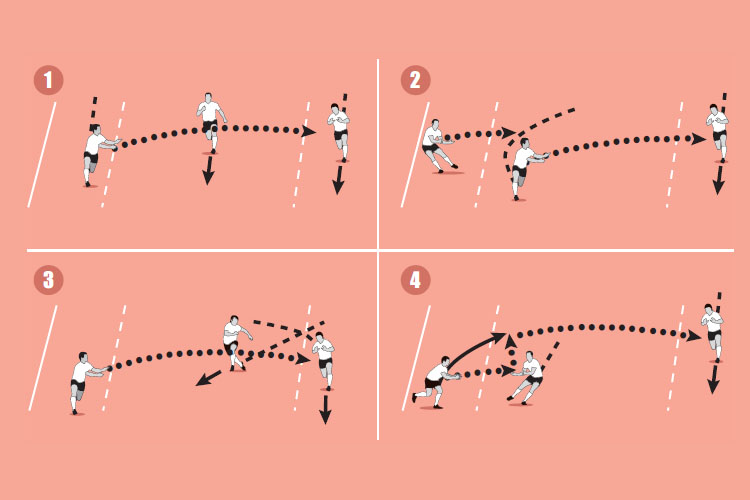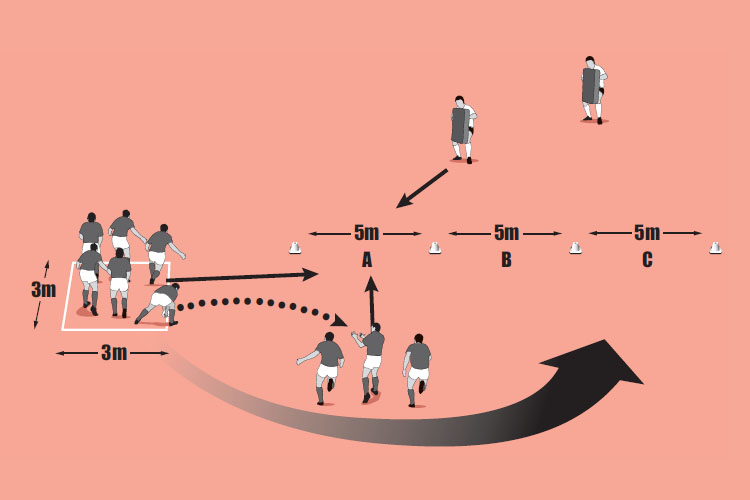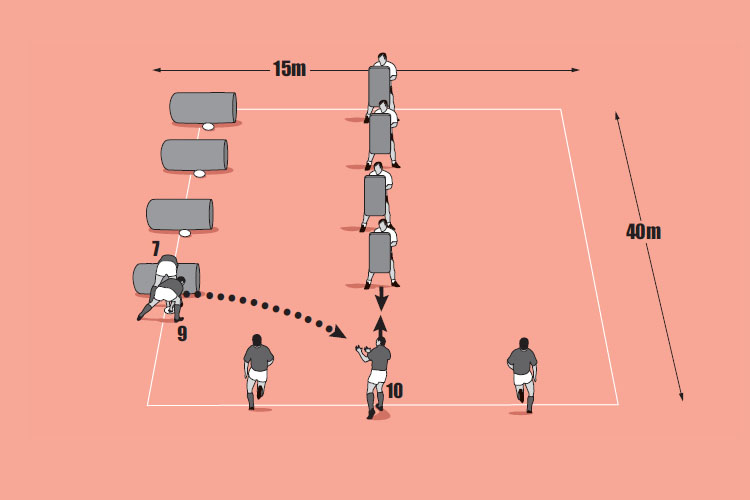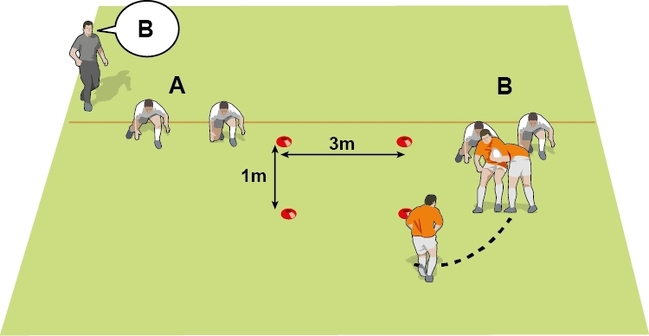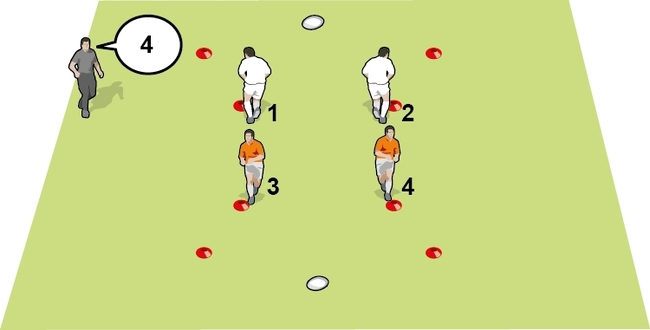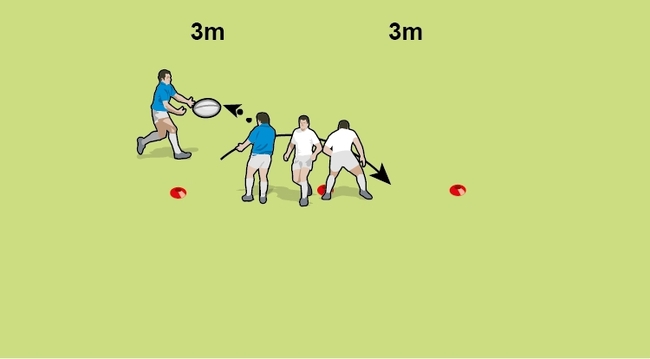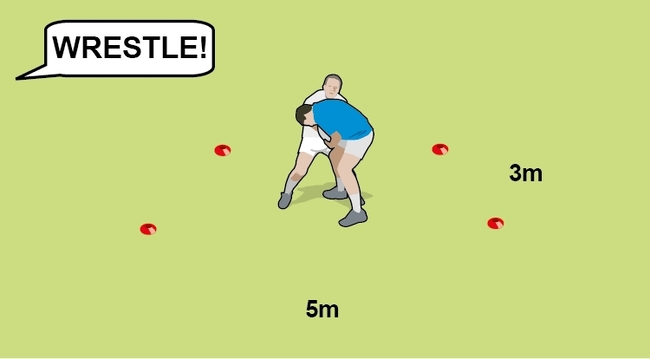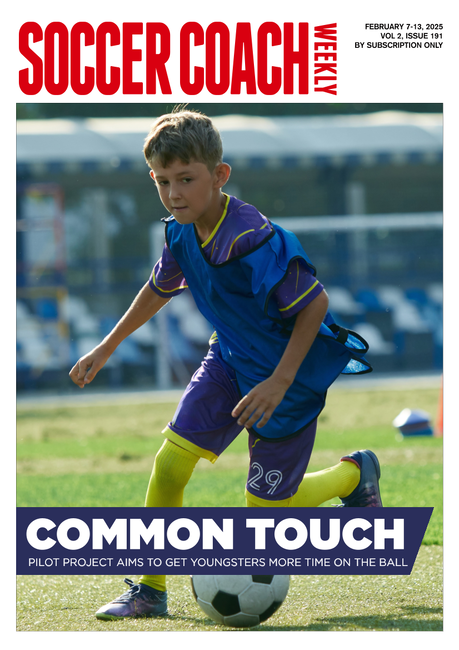Better heights
It is a recurring theme that players find themselves too high in the contact area and, therefore, are not effective. Here is a simple session which you might have used parts from before in which the coach uses a flag pole for the players to run under.
Warm up time: 5-7
Session time: 8-10
Development time: 10-15
Game time: 10-15
Warm down time: 5-8
What to think about
A tired player is less likely to arrive low at the tackle contest. That’s understandable when he is trying to draw breath. Therefore, you need to create good habits for players. There is a strong physical cue to keep low (a stick!), and players will work out their own methods to keep low and drive through. Some will change their stride patterns, others will get their backsides closer to the ground. No need to worry how they do it, as long as they stay on their feet through the contact area and make a good contact. I personally don’t use a flag pole but an old walking stick. I often get another player or parent, if I am working with younger players, to hold the stick.set-up
- Dip low and early then rise up into contact.
- Keep your eyes open and looking ahead.
- Keep the legs active and driving forward through the contact area.
What you get your players to do
Stand with a flag pole next to a ruck pad with a ball. Put two groups of players either side of you, about 5m away. Call a player from one of the groups. He runs round, squares up and goes under the pole, stepping over the ruck pad and ball. Sometimes call out two at a time. Adjust the height of the pole to create different challenges (see picture 1).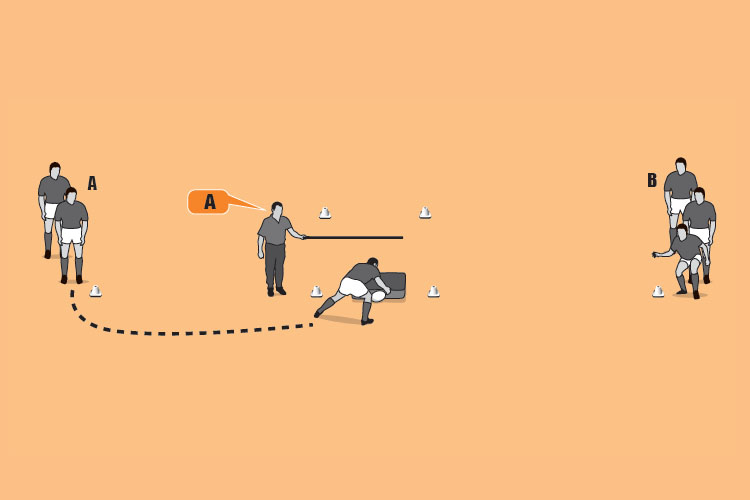
Development
Put a ruck pad holder about three steps after the ruck pad. The player coming under the pole has to drive the advancing ruck pad holder backwards, still not touching the ball (see picture 2). To help the session keep moving, it is good to have two ruck pad holders alternating. While one is being driven backwards, the other steps in.Game situation
Put four attackers at one side of the middle of a 20m x 5m box and one with a ball on the opposite side. Put one defender in front of two defenders at one end, and one in front of another at the other end. Point which way to go and the ball carrier has to run down the narrow box to get to the far end (see picture 3). He must not allow himself to be tackled out of the side of the box. The other attackers enter the box to ensure he does not lose the ball in contact. Stop when there is clean ball from the back of the ruck or the attack loses the ball.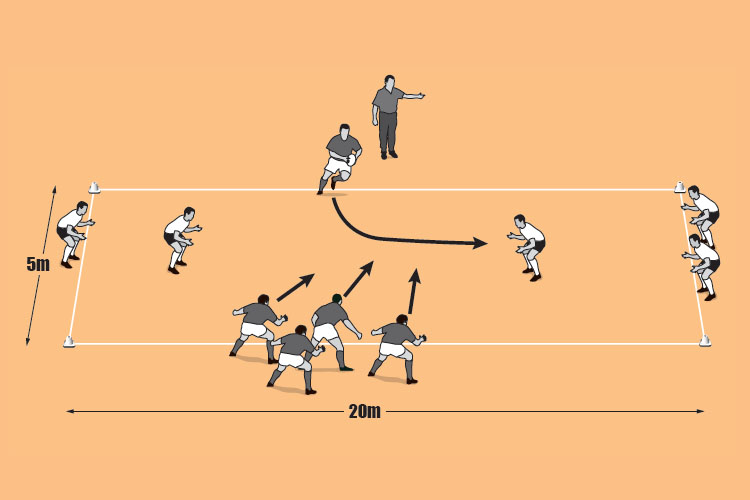
What to call out
- “Eyes open and on the target”
- “Short steps”
- “Don’t bend over, dip your hips instead”
Newsletter Sign Up
Coaches Testimonials

Gerald Kearney, Downtown Las Vegas Soccer Club

Paul Butler, Florida, USA

Rick Shields, Springboro, USA

Tony Green, Pierrefonds Titans, Quebec, Canada
Subscribe Today
Be a more effective, more successful rugby coach
In a recent survey 89% of subscribers said Rugby Coach Weekly makes them more confident, 91% said Rugby Coach Weekly makes them a more effective coach and 93% said Rugby Coach Weekly makes them more inspired.
Get Weekly Inspiration
All the latest techniques and approaches
Rugby Coach Weekly offers proven and easy to use rugby drills, coaching sessions, practice plans, small-sided games, warm-ups, training tips and advice.
We've been at the cutting edge of rugby coaching since we launched in 2005, creating resources for the grassroots youth coach, following best practice from around the world and insights from the professional game.
